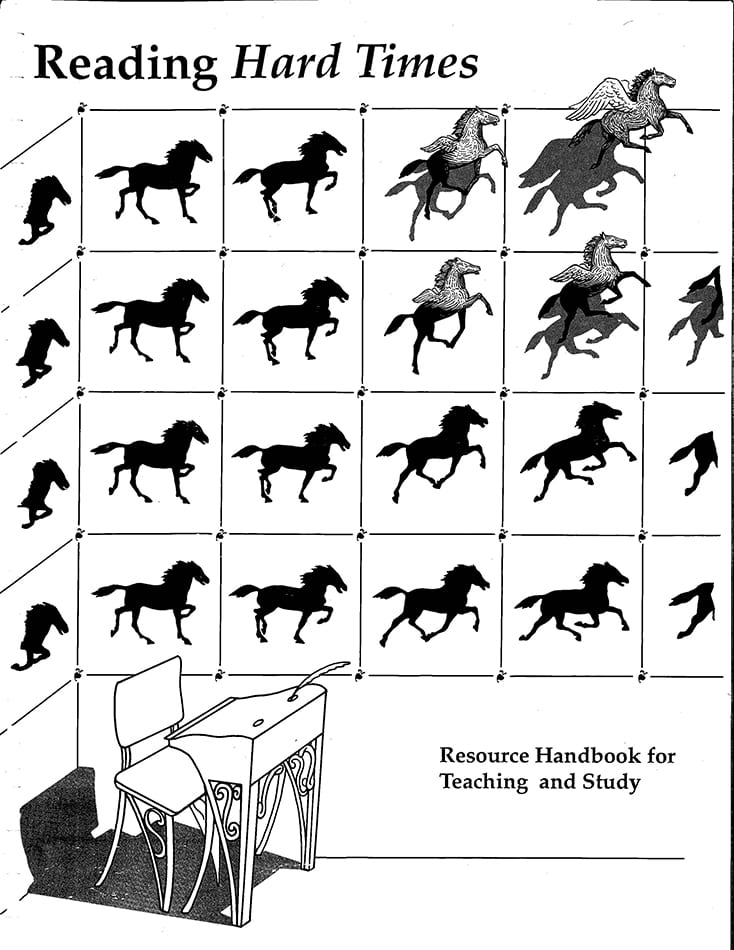Reading Hard Times
Resource Materials for Teaching and StudyContents
Part I: Creating a Context: Biography (132 pages)
This section presents biographical information about Dickens prior to and during the creation of Hard Times. We include material from Dickens’ own life concerning his separation from his wife that echoes Stephen Blackpool’s experience. International encyclopedia entries and an article about Dickens in Spain give a brief world view of Charles Dickens. Short biographies of leading economic thinkers of the industrial revolution
Part II: Developing Understanding and Interpretation (88 Pages)
This section focuses on the needs of students and teachers who have started the process of studying Hard Times. The first part reviews the serial publication of the novel; the history of how Hard Times was published and read tells us a great deal about its structure and function. The introduction to serial publication describes how the novel can be read and taught in “weekly numbers.” The bulk of the section is devoted to interpretive readings of Hard Times, some of which were written especially for the handbook. The interpretive section is preceded by an annotated bibliography suggesting the scope and impact of various critical writings. A series of classroom activities follow which feature innovative ways to involve students in the reading and thinking process through the use of art, music, computer, cartooning, and writing.
Part III: Building Mastery and Integration (68 pages)
The final part of the handbook presents a diverse array of materials which is intended for use after students have read the entire novel. Dickens’ words lend themselves to oral reading, dramatization and performance, so it is only appropriate that this section is accompanied by a video and audio tape of the Dickens Players performing scenes from Hard Times. These tapes and script can demonstrate to students how easily the novel is adapted to performance and can serve as a model for student renditions of additional scenes. Three articles suggest ways to involve students in performance–through games, Reader’s Theatre and tableau vivant–as a way of understanding situations and relationships in Hard Times.
Following the activities are excerpts from works by other authors exploring the themes and topics appearing in Hard Times. Students may wish to then read these entire books, or choose from those listed in a bibliography of still more related works.
Other suggested activities include creative writing assignments and a Coketown newspaper project. This section also provides reference guides to fils and books which make excellent companion viewing and reading for Hard Times.

Reading Hard Times, Resource Handbook for Teaching and Study. Baumgarten, Murray, et al. Santa Cruz: The Dickens Project, 1989.
Lydia Alix Fillingham
Nancy Armstrong
Patrick Brantlinger
Peggy Burkhardt
Geoffrey Carnall
Jean Carr
Richard Currie
Diane Dewhurst Belcher
Catherine Gallagher
Marilyn Georgas
Jan Hodge
Frank Huggett
Catherine Judd
Fred Kaplan
F.R. Leavis
Sylvia Manning
Joyce Miller
Julie Minnis
Sylvere Monod
Ada Nisbet
Norris Pope
Jane Purcell
Alan Ritch
Hilary Schor
Joseph Silverman
Gail Starkey-Oliver
Debra Teachman
Julian Treuherz
Erik Trump
Robert Vaughan
Stan Williams
Raymond Williams